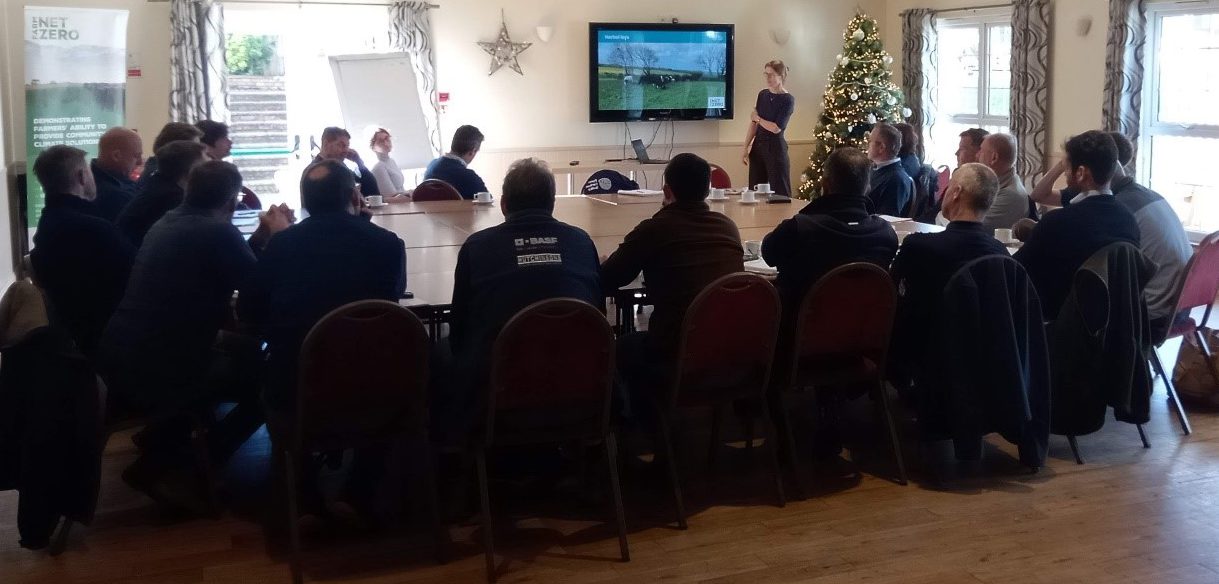
This event was designed for agronomists to learn about the results of some of the Farm Net Zero (FNZ) trials. Dr. Hannah Jones of the Farm Carbon Toolkit was joined by the farmers who hosted and designed the trials to discuss the findings. This event was made possible with thanks to the National Lottery Community Fund who fund the Farm Net Zero project.
Throughout the discussions, the new Sustainable Farming Incentive (SFI) payments were referred to as a potential method of reducing the risk of adopting the practices trialled by the Farm Net Zero demo and monitor farms. This report will summarise the trials presented and the discussions that followed, including the views of the agronomists present at the workshop.
Outwintering on Cover Crops
Cover crops can be useful for protecting soil by reducing erosion and nutrient leaching and preserving soil carbon stocks. In Cornwall’s mixed farming systems, cover crops can provide an opportunity for outwintering livestock in a cost-effective manner. Therefore, it is pertinent to think about the plant species included in a cover crop mix and balance up their soil health benefits with the potential feed value.
A Farm Net Zero trial was set up in winter 2021-2022, where five cover crop mixes of varying complexity were grazed by beef youngstock. Full details of the trial can be found on the Farm Net Zero Project Resources page here. The most diverse mix had the biggest improvement in soil quality, reducing compaction and attracting the most earthworms. In terms of feed value, any mixes containing black oats were the most popular with the cattle and had high dry matter, crude protein and sugars.
It was suggested that the SFI SAM2 “Multi-species winter cover” payment of £129/hectare could be used to support this practice.
Maize Establishment
FNZ Monitor Farmers, Malcolm and Catherine Barrett, have trialled different methods of establishing maize crops. In spring 2022, two fields were taken and divided into thirds – one where maize was established conventionally (plough, power harrow, drill), one cultivated with a Sumo machine, and one direct drilled with a Mzuri drill. The direct drill had the lowest fuel requirement and therefore cost. Cob weight assessments found that cobs were smallest in the ploughed area and highest where the crop was established after the cultivator. Soil sampling showed that organic matter levels dropped following ploughing, with worm numbers also reduced.
One further area of interest developed when Malcolm and Catherine noticed that the sprayed-out clover regrew in the direct drilled area. This could potentially provide nitrogen for any following crops, and so a trial was designed for the barley drilled after maize harvest. In this trial, part of the field had no nitrogen applied in order to observe any influences of the clover. Quadrat yield assessments found no significant difference between the full nitrogen fertiliser regime and the no nitrogen area and further analysis of grain nitrogen found that both the full rate and zero nitrogen well exceeded the recommended level for feed barley. This prompted discussions on the opportunities for reducing nitrogen fertiliser (and therefore reducing carbon emissions), with most of the agronomists present agreeing that this is achievable, particularly on mixed farms where livestock contribute to healthy soil. One suggestion from the group was that where soil is in good condition, nitrogen could be applied as a foliar feed direct to the plant because the healthy soil is providing good support for the plant roots.
Soil Rejuvenation after Potatoes
On FNZ Demo Farm, Ennis Barton, some ground is let for vegetable production, when this comes back in hand Andrew Brewer wants to find the fastest method of restoring soil health and returning the fields to cattle grazing. In one of the potato fields, a variety of cover crops (eligible for SAM2) were undersown with ryegrass, clovers and plantain, these were then grazed over winter. Soil quality assessments found that mixes containing Westerwolds ryegrass had the most positive effect on soil aggregate stability. However, in the following summer the Westerwolds rapidly went to seed, which made managing grazing quality a challenge. Therefore, the next best cover mix was forage rape or rye and vetch. This is another example of considering the trade-offs of mixed farming when designing systems that optimise soil quality.
Inter-Crops for Cabbages
Some of the ground rented out at Ennis Barton is used for Savoy cabbages. Following a Farm Net Zero meeting looking at managing these “risky crops”, Andrew and the cabbage growers were keen to develop methods of reducing soil erosion between the cabbage rows. A trial was designed where a mix of low-growing, deep-rooted species (chicory, plantain, white clover and buckwheat) were intersown between the cabbage rows at the beginning of October after all cabbage hoeing was completed. This trial is still being monitored, but there are hopes that intercropping will protect soil from erosion, provide feed for livestock and also reduce the amount of disease/damage to the cabbage leaf from “soil bounce” after rain. Again, this could be eligible for the SAM2 SFI payment.
Grazing Winter Cereals
Grazing winter cereals was a common practice to manage plant disease, growth rates, fertility and livestock wintering. FNZ Monitor Farmer, Anthony Ellis, tried a return to this practice on his family arable and sheep farm during winter 2022-2023. Part of a field of winter wheat was grazed with ewe lambs, with the wheat grazed right into the ground. This allowed Anthony to reduce growth regulators and fungicide and slightly reduce the nitrogen applications compared to the ungrazed remainder of the field. Septoria was reduced early in the season, but there was less difference closer to harvest as the grazed wheat caught up with the ungrazed. Some discussion followed concerning how although this is an old practice, it is now possible to put some firmer figures on the carbon savings of reduced inputs from grazing cereals.
Conclusion
Overall, this workshop for agronomists provided an excellent opportunity to share some of the project’s results so far, and to learn from agronomists who work across the project region and further afield. The ability to work collaboratively with the wider agricultural community is very valuable and helps to ensure the Farm Net Zero project reflects as many farming systems as possible.
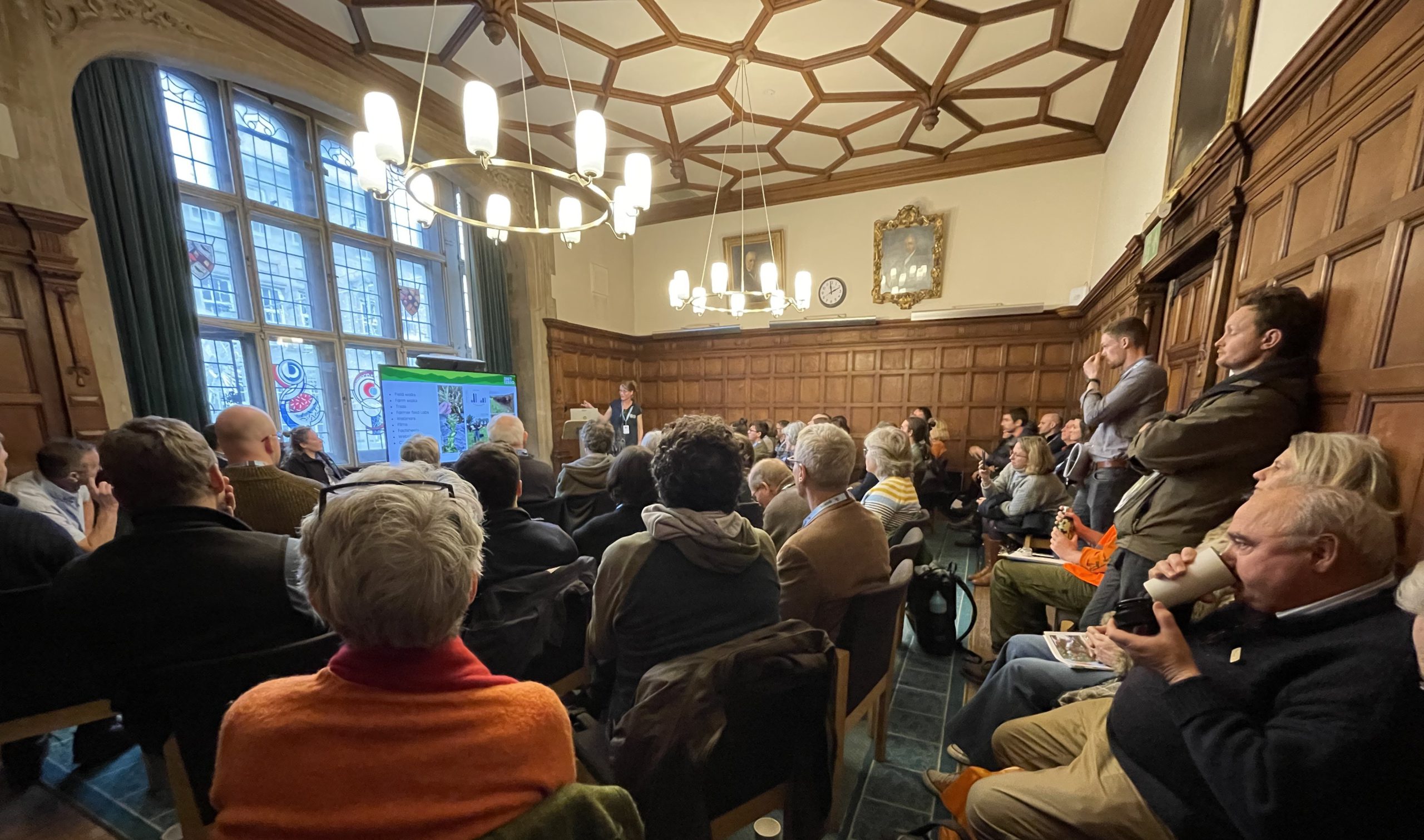
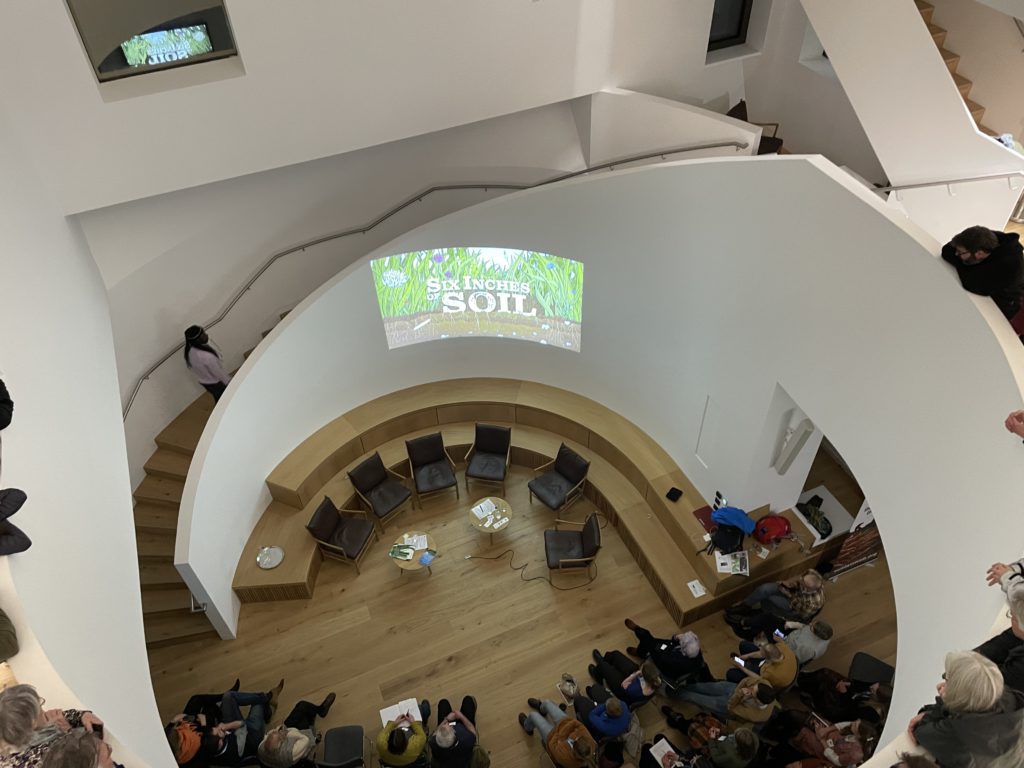
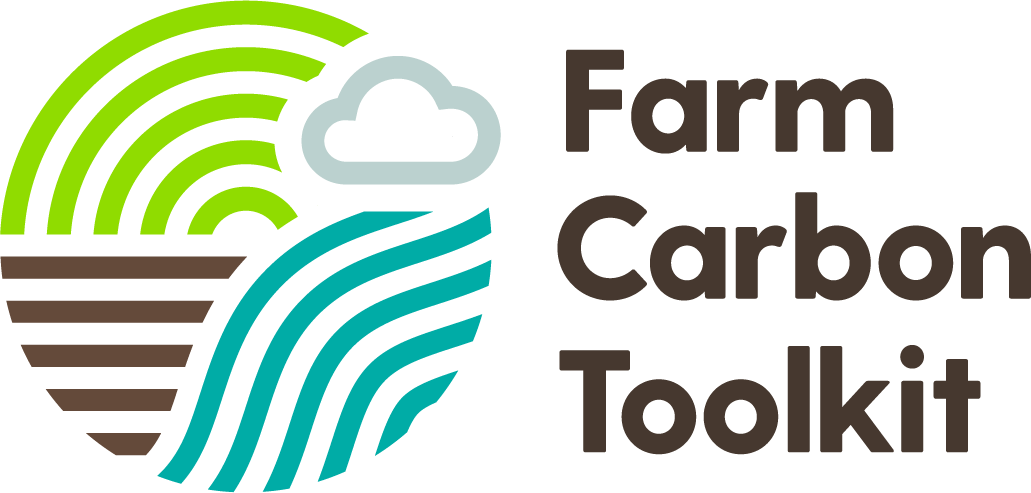
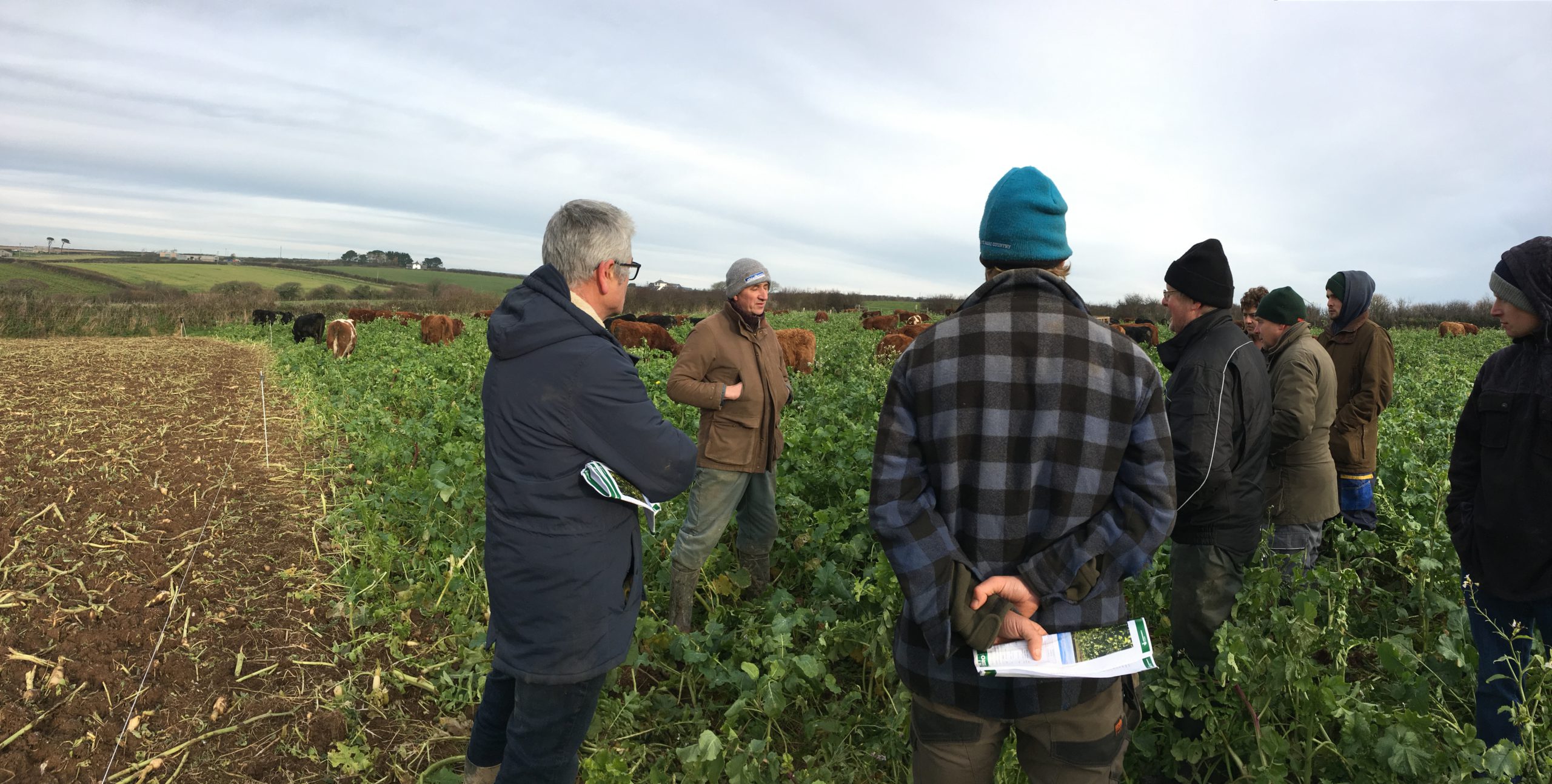
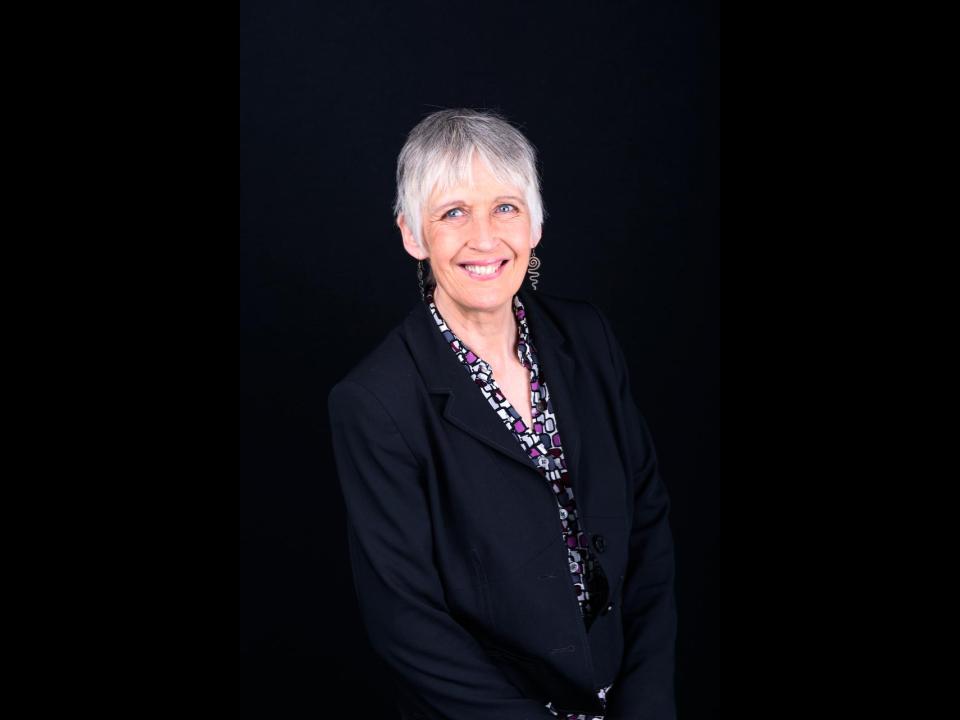
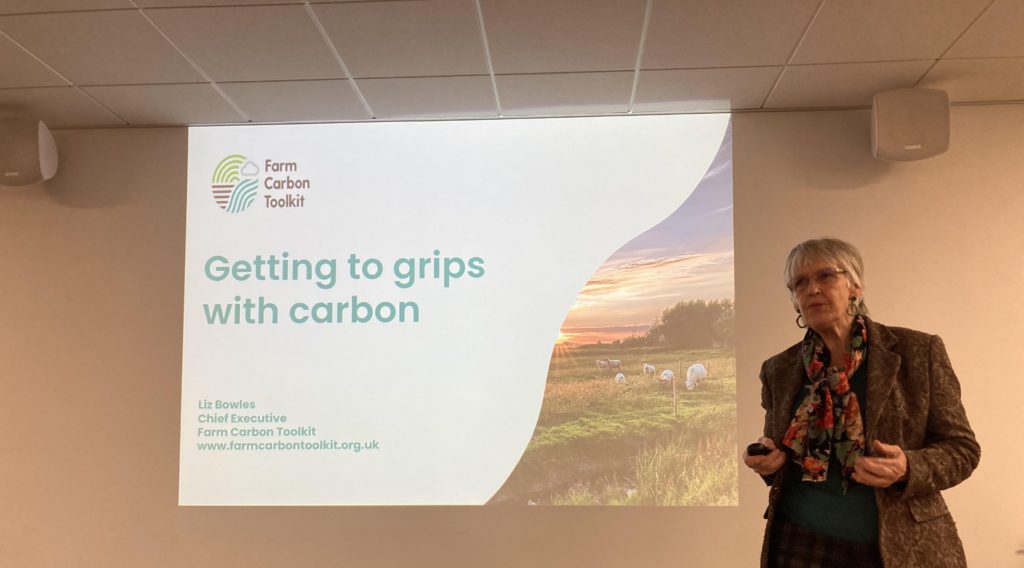
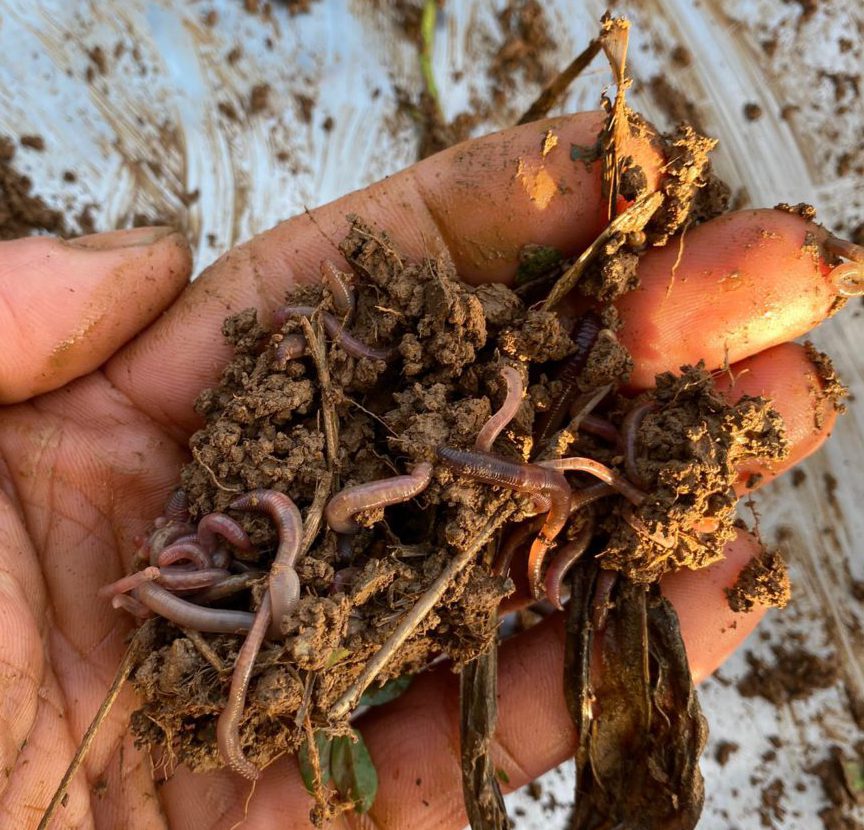

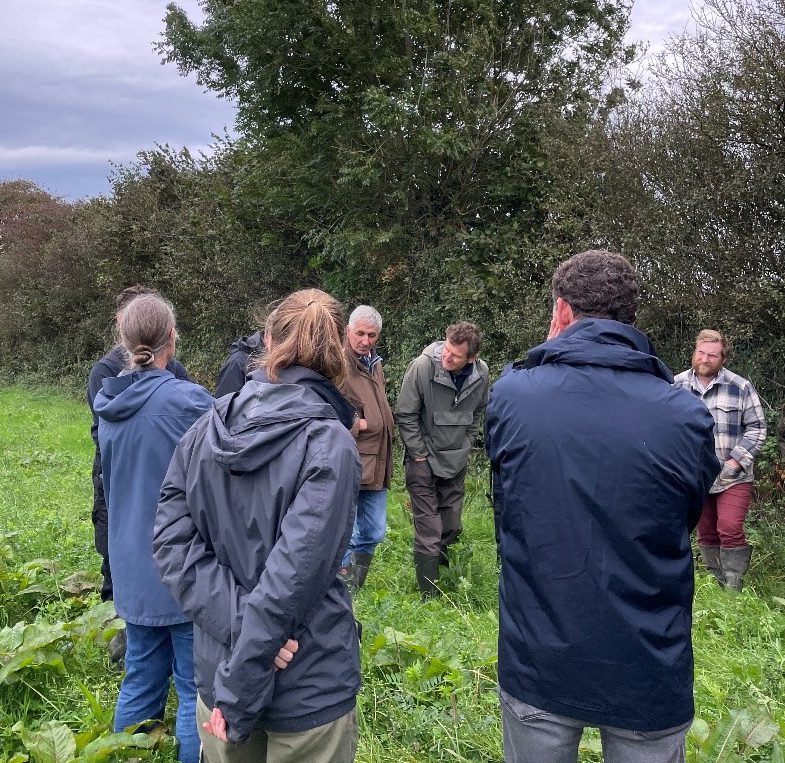
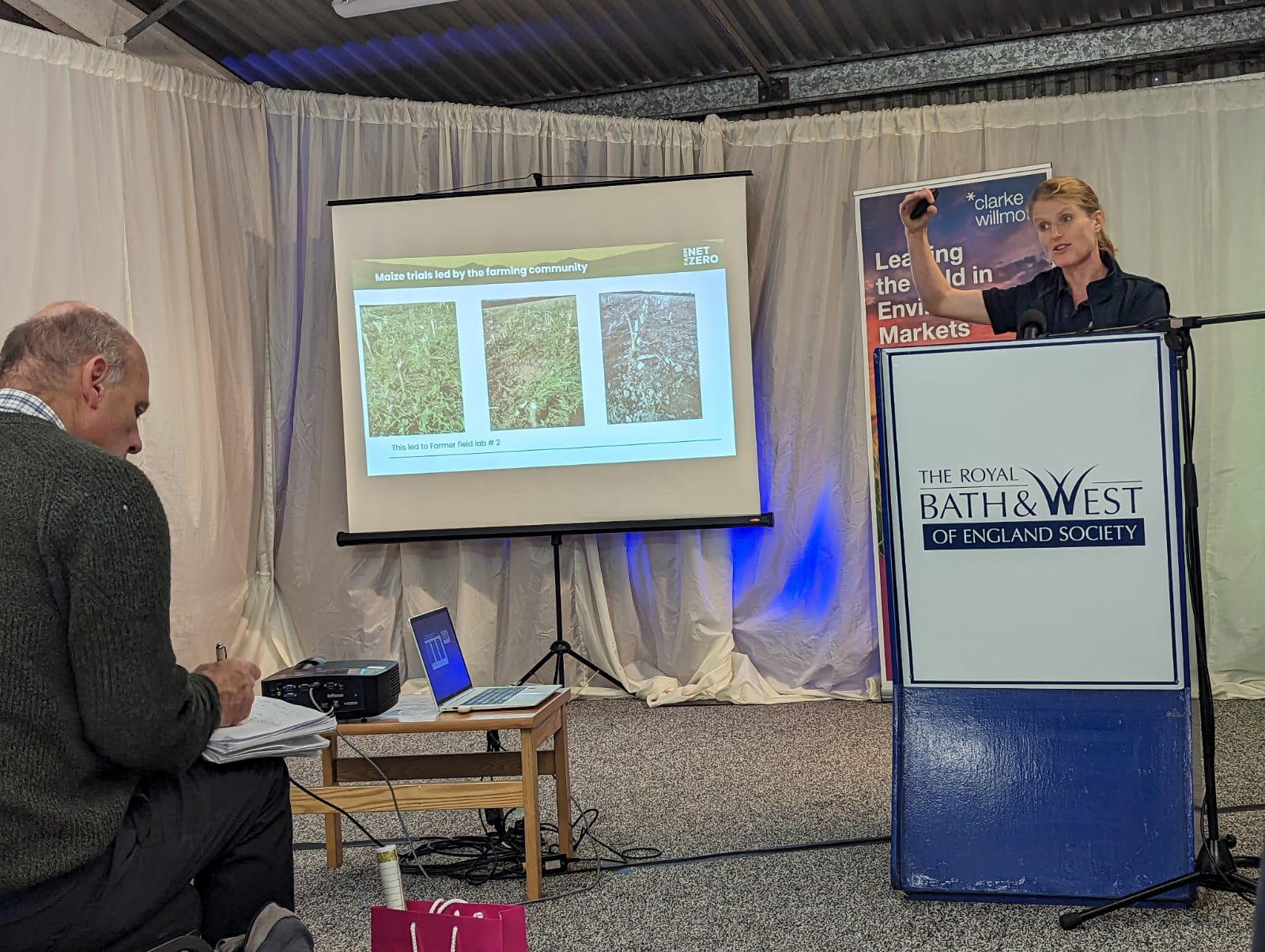


Recent Comments